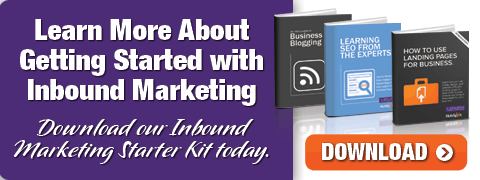 Chances are you've heard all about how inbound marketing strategies can put the Internet to work for you and get you more leads and sales. You've probably heard about how 34% of all business leads generated in 2013 resulted from the use of inbound marketing tools; how marketers dedicated 34% of their budgets to inbound marketing strategies, but only 11% to outbound tactics; and how 48% of marketers planned to spend more on inbound marketing strategies in 2013.
Chances are you've heard all about how inbound marketing strategies can put the Internet to work for you and get you more leads and sales. You've probably heard about how 34% of all business leads generated in 2013 resulted from the use of inbound marketing tools; how marketers dedicated 34% of their budgets to inbound marketing strategies, but only 11% to outbound tactics; and how 48% of marketers planned to spend more on inbound marketing strategies in 2013.
But no one has probably ever explained to you how an inbound marketing strategy works. Let's change that.
The Tools of the Trade.
Inbound marketing services use several different tactics to pull build a company's web presence and improve its online visibility. Blogs, search engine optimization, and email campaigns are all used to generate web traffic. Social media is a particularly powerful new tool that many marketers are using. In fact, about 47% believe that social network Facebook is a powerful tool. After all, it can spread a company's logos and popular branding images all over the web, a strategy proven successful by the likes of Oreo Cookies.
The Funnel of Inbound Marketing
Once prospective clients arrive at your website, your leads are now in what inbound marketing experts call "the funnel." At the top of the funnel, their awareness is raised and they learn more about your industry. In the middle of the funnel, you provide them with even more educational info that introduces your company's products and services, which qualifies and nurtures leads. At the bottom of the funnel, nurtured leads are prompted to get in touch with salespeople, who then close the sale.
The ROI of Your Efforts.
Once your inbound marketing strategies start pulling in more leads and sales, it's time to examine your return on investment. On average, outbound marketing costs $373 per lead, while inbound marketing only costs $143 per lead, which means inbound marketing strategies generate about seven leads for every three leads generated by outbound marketing.
Too Long; Didn't Read.
Basically, inbound marketing strategies get your website more traffic using custom content, which 61% of consumers prefer. These visitors become qualified leads, which then become sales.
If you have any questions about how this process works, feel free to ask in the comments.

